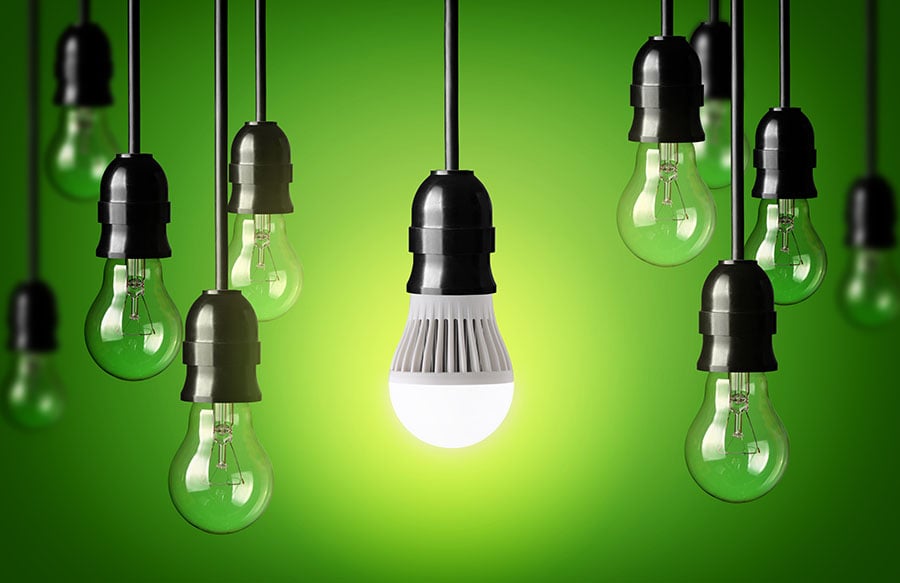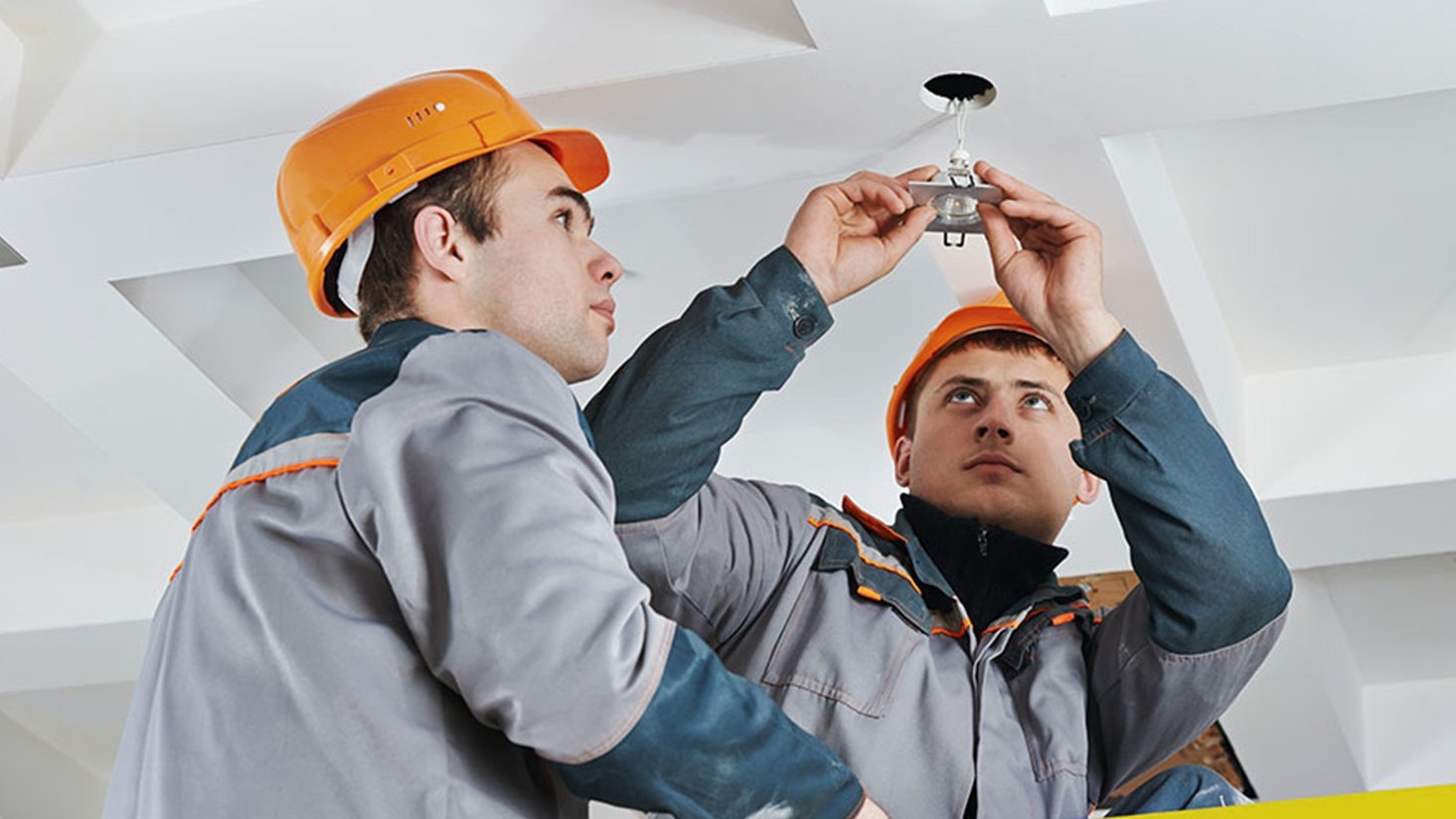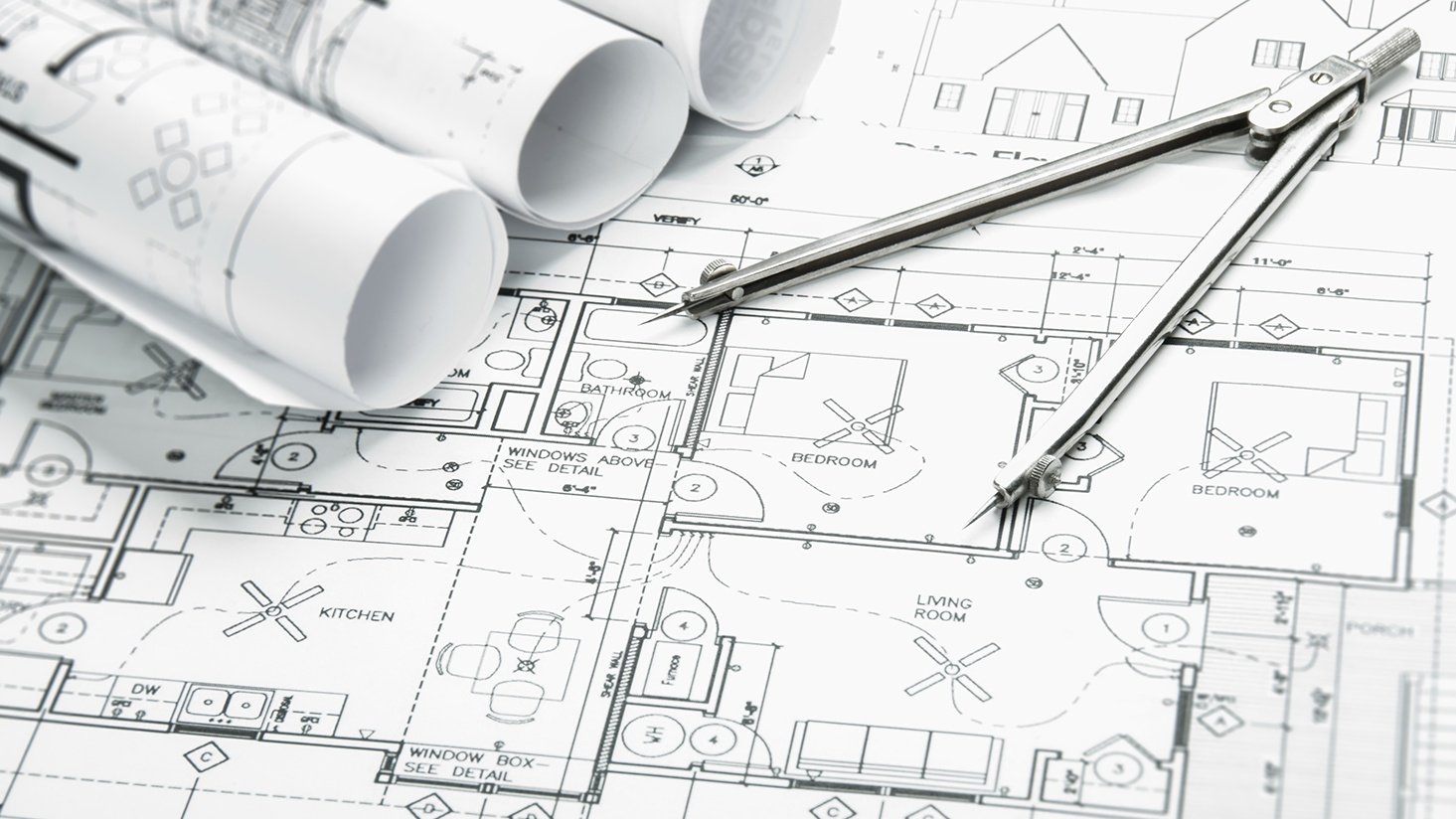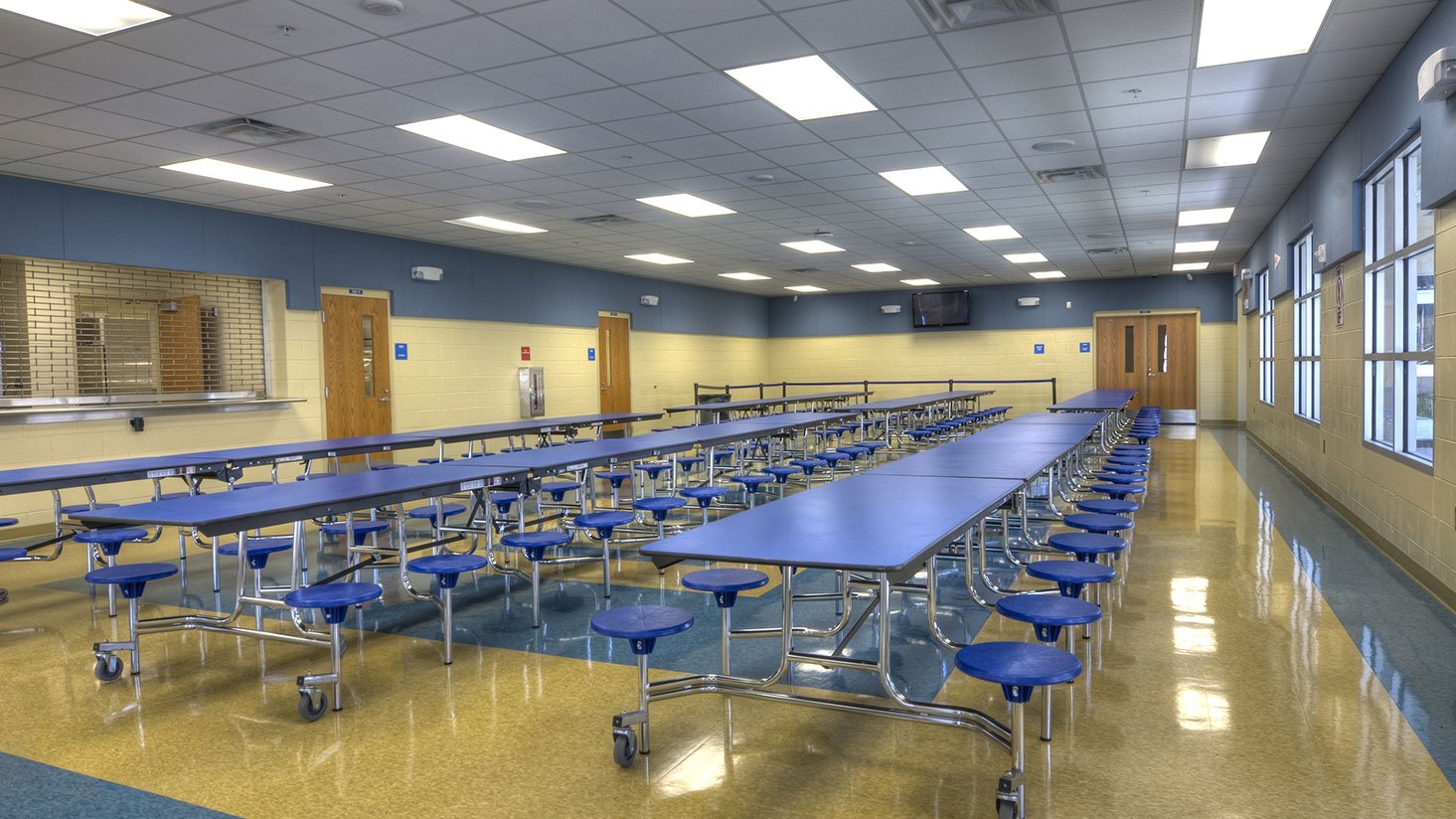How to calculate material savings from long-life lighting: A step-by-step guide

This is the third post in our series to take the mystery out of savings and payback calculations for lighting retrofits. Lighting projects are more common than ever with the efficiency, long-life and lowering cost of LEDs, and there can be a large number of factors to tally up in the savings calculations. We are helping to answer the question of how you know which ones to include.
This article focuses on the material savings that you gain when you switch to long-life lighting products, like LED.
The principle behind material savings from long-life lighting
Most existing lighting products, like incandescent, halogen or CFL bulbs, have a life span ranging from 1,500 hours to 15,000 hours. On the low end of that scale, this means that if you operate your lighting 12 hours a day, 360 days per year, you could be replacing a burned-out bulb two to three times a year. That cost can add up quickly, especially across a large number of sockets or facilities.
LED lighting typically carries a rated life of 35,000 to 100,000 hours, which means you will not need to replace “burned-out” products nearly as often. (Interestingly, the rated life of an LED is based on it’s light output dropping 30 percent, not actually failing. You may find the useful life to be longer than the rated life, but we won’t factor that into our calculations.) Most LEDs are also covered by a three-to-five-year warranties from the manufacturer.
For our example, we will continue using the scenario we started with in our first article. You are replacing a 90 watt PAR 38 bulb with a 14 watt LED PAR 38 that operates 12 hours a day and 360 days per year. Let’s get started.
Step 1: Gather your facts
You will need to pull together the following items before we dive into the calculations.
- Rated life for the existing product: Let’s assume you are using a PAR38 that has a rated life of 1,500 hours.
- Rated life for the new product: Let’s assume the replacement LED PAR38 is rated for 50,000 hours and carries a 5-year manufacturer warranty.
- Replacement cost for the existing product: Let’s assume you that replacement halogen PAR 38s would cost $4.50 each.
- Replacement cost for the new product: Let’s assume you that a replacement LED PAR 38 would cost $25.00 each.
- Total annual running time: In this case, the annual run time is 4,320 hours (see Step 3 in “How to calculate energy savings for lighting only: Step-by-step guide”)
Step 2: Calculate the number of times per year you would have to replace the existing product
This is dependent on the rated life of your existing product and the amount of burn time in your application.
| Total annual running time | |
| ÷ | Rated life for existing product |
| = | Number of times per year to replace existing product |
| 4,320 hours of annual run time | |
| ÷ | 1,500-hour rated life (existing) |
| = | 2.88 annual replacements per socket (existing product) |
Step 3: Calculate the cost of existing product replacements
Now that we know how many times we are replacing a burned-out bulb, let’s figure out the cost.
| Annual replacements for the existing product | |
| x | Cost of existing product |
| = | Annual replacement cost (per socket) |
| 2.88 Annual replacements (existing product) | |
| x | $4.50 Replacement price |
| = | $12.96 Annual replacement materials cost |
Step 4: Calculate the number of times per year you would have to replace the new product
This is the same calculation as step No. 2.
| Total annual running time | |
| ÷ | Rated life for new product |
| = | Number of times per year to replace new product |
| 4,320 Hours of annual run time | |
| ÷ | 50,000-Hour rated life (new) |
| = | 0.09 Annual replacements per socket (new product) |
Step 5: Calculate the cost of new product replacements
This is the same calculation as step No. 3.
| Annual replacements for the new product | |
| x | Cost of new product |
| = | Annual replacement cost (per socket) |
| 0.09 Annual replacements (new product) | |
| x | $25.00 Replacement price |
| = | $2.25 Annual replacement materials cost |
Step 6: Calculate your savings
There are two ways to approach this. First, you can calculate the basic material replacement savings:
| Annual replacement materials cost (existing) | |
| – | Annual replacement materials cost (new) |
| = | Annual materials savings |
| $12.96 Annual replacement materials cost (existing) | |
| – | $2.25 Annual replacement materials cost (new) |
| = | $10.71 Annual materials savings (per bulb) |
The second way to approach this relates back to the manufacturer’s warranty for the new product. In this case, the 50,000-hour product operating 4,320 hours per year should last 11.5 years and the manufacturer warranties the product for five years. Since you have the backing of the warranty, you may want to consider the materials replacement cost of the new product to be zero. In this case, your savings would be:
| Annual replacement materials cost (existing) | |
| – | $0 since the new product is under warranty |
| = | Annual materials savings |
| $12.96 Annual replacement materials cost (existing) | |
| – | $0 Annual replacement materials cost (new) |
| = | $12.96 Annual materials savings (per bulb) |
Either method is valid based on your project, budgeting, and application.
Now that you have the savings number per bulb, you can multiply the savings by the number of sockets and watch the number grow. Most of our clients still include these savings in their project payback since it affects your replacement product budget.
Looking for a more basic energy savings calculation? See our step-by-step guide for calculating lighting only energy savings.
Additional Resources:










